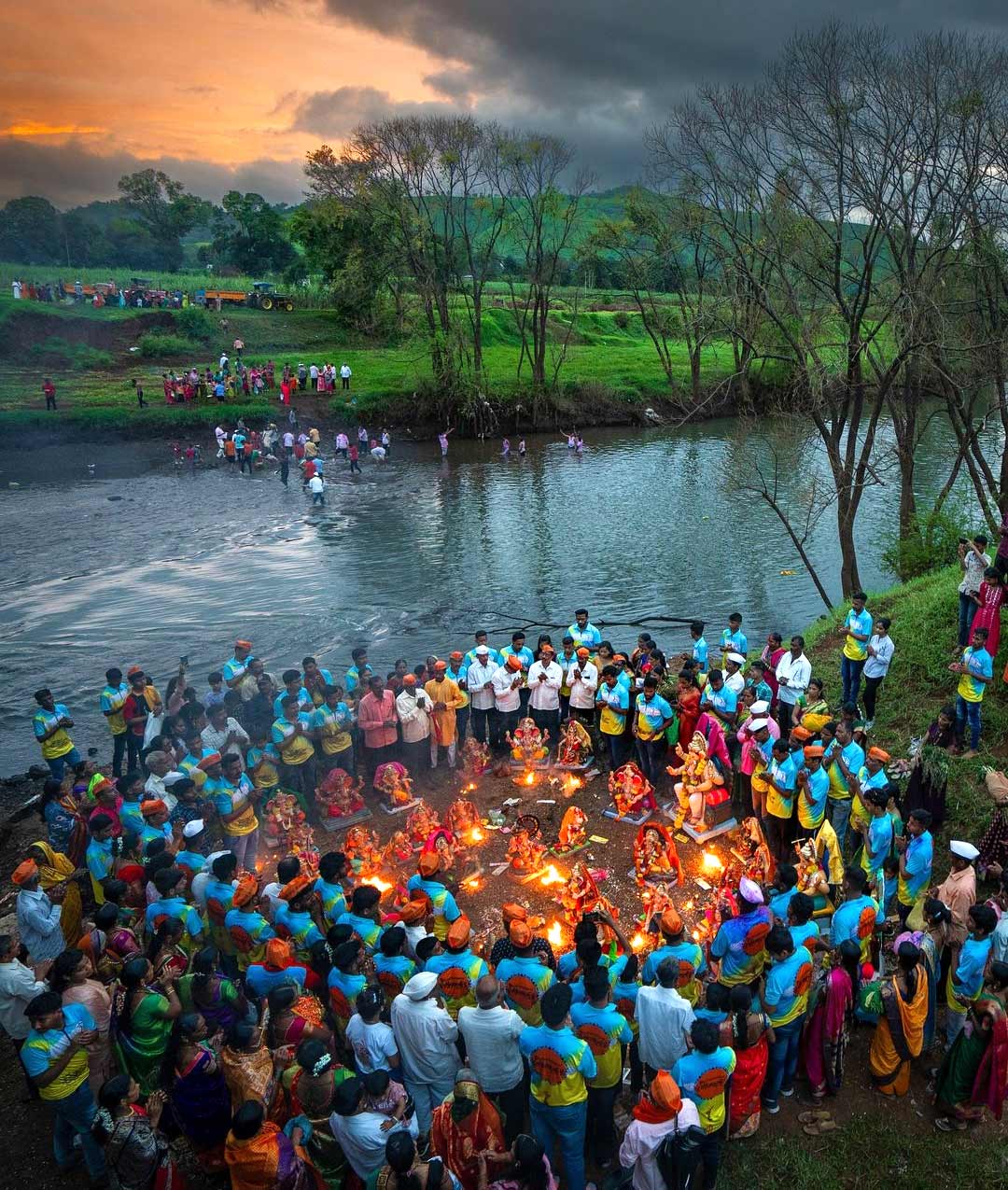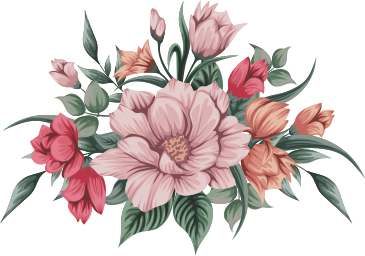A Glimpse into the Past
Ganesh Festival History
The History of Ganesh Festival in Pune
Pune, a city synonymous with culture and tradition, has been a witness to the grandeur of Ganesh Chaturthi for centuries. From the humble beginnings to the extravagant celebrations of today, the festival has evolved while preserving its essence. Let’s explore the rich history of Ganesh Utsav in Pune.

The Ganesh festival is deeply rooted in the city of Pune. Enjoying this festival in Pune is an experience like no other. During the Peshwa era, there were more than 400 temples in Pune. Ganpati temples were one of the most prominent temples amongst them. The tradition of celebrating the Ganesh festival the way we do it today was prevalent in those days as well. Even before the time of Chhatrapati Shivaji Maharaj, the Ganesh festival was celebrated in the Pune region. In the Peshwa era, the primary festivals like Dussehra, Holi, Vasant Panchami, Makar Sankranti, etc. were celebrated by people with pomp and splendour. The Peshwas would issue a significant amount of money for these royal celebrations.
The primary deity of the Peshwas was the Ganesha. The Peshwa family was originally from Shrivardhan in the Konkan region. Peshwa Balaji Vishwanath was a disciple of Swami Bramhendra. During one of their meetings, Swamiji blessed Balaji Vishwanath by saying that “Shri Ganesh (Gajanana) and Bhargav will bless you with an important position in life”. Soon enough, this blessing came into manifest in the form of political power and respect.
Balaji Bajirao, i.e. Nanasaheb Peshwe celebrated many festivals on a large scale in the Shaniwar Wada. The Peshwa who succeeded him, Madhavrao Senior was a staunch devotee of Lord Ganesha. When Sawai Madhavrao was a child, there is a note of the Ganesh festival being celebrated on the Purandar Fort. Also, in a small village called Aundh near Pune, the Ganesh festival was celebrated in the year 1732. A few documents that depict the order in which the immersion procession would be carried out have also been found. From the first day (Pratipada) of the Marathi Hindu calendar (Bhadrapada) to the tenth day (Dashami), the Ganesh festival was celebrated in the Shaniwar Wada. On this occasion, the Ganpati palace was specially decorated. A number of performances like music concerts, dances, mimicry, a special performance that depicts the stories of the ten incarnations of Lord Vishnu (Dashavatar), storytelling and other arts were presented in this palace in the presence of the Peshwas. Every performer got the appropriate remuneration for their art and performances. The decorations in front of the Ganpati idol, various paintings, and mirrors that adorned the walls, as well as other decorative articles, gave a different look to the palace.
During the Ganpati festival, all the servants in Shaniwar Wada would put in a lot of effort to make the festival a great success. As an appreciation of these efforts, the Peshwas would give out sweets and some money as a reward. Many Brahmins would partake in the traditional lunch that included many wonderful items. On the tenth day of the festival, a palanquin decorated with flowers was used to carry a colourful clay idol of Lord Ganesh to the banks of the river. After worshipping the idol religiously and traditionally on the riverbank, it was immersed into the river. The Peshwa used to personally accompany the procession. Haripant Phadke, Mujumdar, Trimbakrao Dikshit, Chintaman Dikshit, Appa Balwant, Aba Khadilkar, Shivaji Gonat, Bajipant Appa, Sakopant Dabadghav were some of the famous personalities associated with the Ganesh festival in Pune in those days.
It can be seen from the financial documents maintained at the time of Nanasaheb Peshwa that the Ganesh festival was celebrated on a grand scale. In 1794-95 during the time of Sawai Madhavrao, the Ganesh festival was celebrated and the records of which can be found in Waad diaries. Many artists were paid tips for their performances during this festival. Among the artists, 181 Gosavi Hardas got 2155 rupees, 39 singers got 329 rupees, 43 dancers got 1726 rupees, 33 Gurav drummers got 148 rupees, and the band players got 240 rupees. A total of 4175 rupees were given as rewards and tips.
It can be noted that the Ganesh Rangmahal (palace) was built in the Shaniwar Wada during the reign of Sawai Madhavrao.
The Shaniwar Wada has five entrances. One of the entrances is named as ‘Ganesh Darwaja’. The reason for this could be a Ganesh temple that is seen just outside this door. This Ganesha is now known as the “Shrimant Peshwe Ganpati’. Two Ganesha idols are seen on either side of the Batatya Maruti temple near the Shaniwar Wada. Even today, when we enter the Shaniwar Wada from the Delhi Darwaja, we see an old painting of Lord Ganesha on the wall in front of us. The famous painter James Wells has also drawn a picture of the Ganesh festival celebrations from the Peshwa era in 1792. The Ganesh festival continued to be celebrated even after the decline of the Peshwa reign.
The footprints of Ganesh festival
Just like the entire country experienced the Tilak era during its independence struggle, Pune city also had its share of experiencing the greatness of this man. Lokmanya Tilak was the pioneer of public celebrations of the Ganesh festival in Pune and provided important guidance for the same. He also published editorial articles describing his thoughts on the Ganesh festival in his daily newspaper named ‘Kesari’. This initiative nurtured a feeling of national integration in the minds of the society that was reeling under British rule. The invitation to celebrate the festival together was reciprocated by many people and they took up the lead in celebrating this festival in public. The attempts to bring various castes and religions together on a common platform came to fruition slowly through this initiative. This was in direct opposition to the British strategy of divide and rule. It is impossible to think of the Ganesh festival without thinking of Lokmanya Tilak.
Sardar Krushnaji Kashinath alias Nanasaheb Khasgiwale had seen the Ganesh festival celebrations in Gwalior. He wanted a similar festival to be celebrated in Pune as well. That year, three families – Bhausaheb Rangari, Sardar Khasgiwale, and Ganesh Narayan Ghotawdekar celebrated the Ganesh festival by establishing the Ganesha idols in their homes. Lokmanya Tilak had praised them in his newspaper. This encouraged the public celebrations and within a few years, the number of people participating in these celebrations increased. The festival brought society together. There was a feeling of national integration and this festival turned out to be beneficial in many areas. Traditional rituals, religion, and social awareness were preserved and propagated during the festival. Despite several obstacles like rioting, epidemics, and a ban imposed by the British government, the festival did not lose its enthusiasm and continued to be celebrated every year.
Fairs (Mele), classical music concerts, lectures, and speeches have raised the glory of the Ganesh festival. At the beginning of the book, a brief explanation of the fairs is justified. They have influenced the festival for almost 50 to 60 years. These fairs are synonymous with social awareness and development. Poems and songs of the independence struggle would be presented with a tune. These songs were the main attraction of the fairs. As time progressed, the relevance and influence of these fairs diminished and now they do not exist in the festival celebrations. A few famous fairs were named Sanmitra Samaj, Bharat Mitra Samaj, Vajradehi, and Shur. These songs and fairs focused on highlighting key points of social welfare or politics directly or indirectly and attracted people’s attention. In the year 1989 Shrimant Dagdusheth Halwai Mandal tried to bring back the lost glory of these fairs. But the attempt was not successful.
The Ganesh festival was dominated by classical music programs at one time. Several famous artists from all over the country have graced this festival by their attendance. The Mandals would compete with each other to arrange the programs of these artists and performers. Devotees from our elder generation must have enjoyed these programs to the fullest. Film songs and lyrical poetry also dominated the festival celebrations for a few years. Screening of Hindi and Marathi films was also a part of the entertainment menu. This has now transitioned into live or static shows of mythological and historical incidents, light decorations, replicas of large palaces, and Dhol Tasha troupes as a part of the festival celebrations and decor. A few decorations are also dedicated to technology, social awareness, etc. Youngsters make it a point to plan and see the Ganpati Mandal decorations and dedicate an entire night visiting and watching these decorations. This is a regular plan each year among friends. Looking at history, we realize the Ganesh festival celebrations changed over time gradually. What we experience today is this new changed form of the festival; however, the original objective is still achieved.
For the last 30 years, a new cultural initiative called ‘Pune Festival’ has made its mark in the Ganesh festival celebrations. The Pune Municipal Corporation and the Pune Festival arrange several cultural, sports and art programs. Artists from other states as well as the Hindi film industry participate in these programs enthusiastically. Large corporate organizations provide sponsorship to the Pune Festival resulting in a superior status and global recognition.
While there are several aspects of the Ganesh festival, a few important ones are mentioned here. The festival gave us an important contribution in the form of volunteers. These volunteers went on to become leaders who handled the social and political issues of the common people. Several Mandals undertook noteworthy welfare programs that were recognized at a national level, giving them recognition and appreciation all over. The financial turnover of the Ganesh festival is several crores rupees. Studying the financial aspects of the festival can be an interesting initiative. We eagerly await the arrival of this festival every year. And every year we bid adieu to Lord Ganesha with a heavy heart and the next few days feel like something is amiss. Such is the uniqueness of the festival that everyone loves. And there is no other place like Pune if you have to experience this festival in its real glory.


